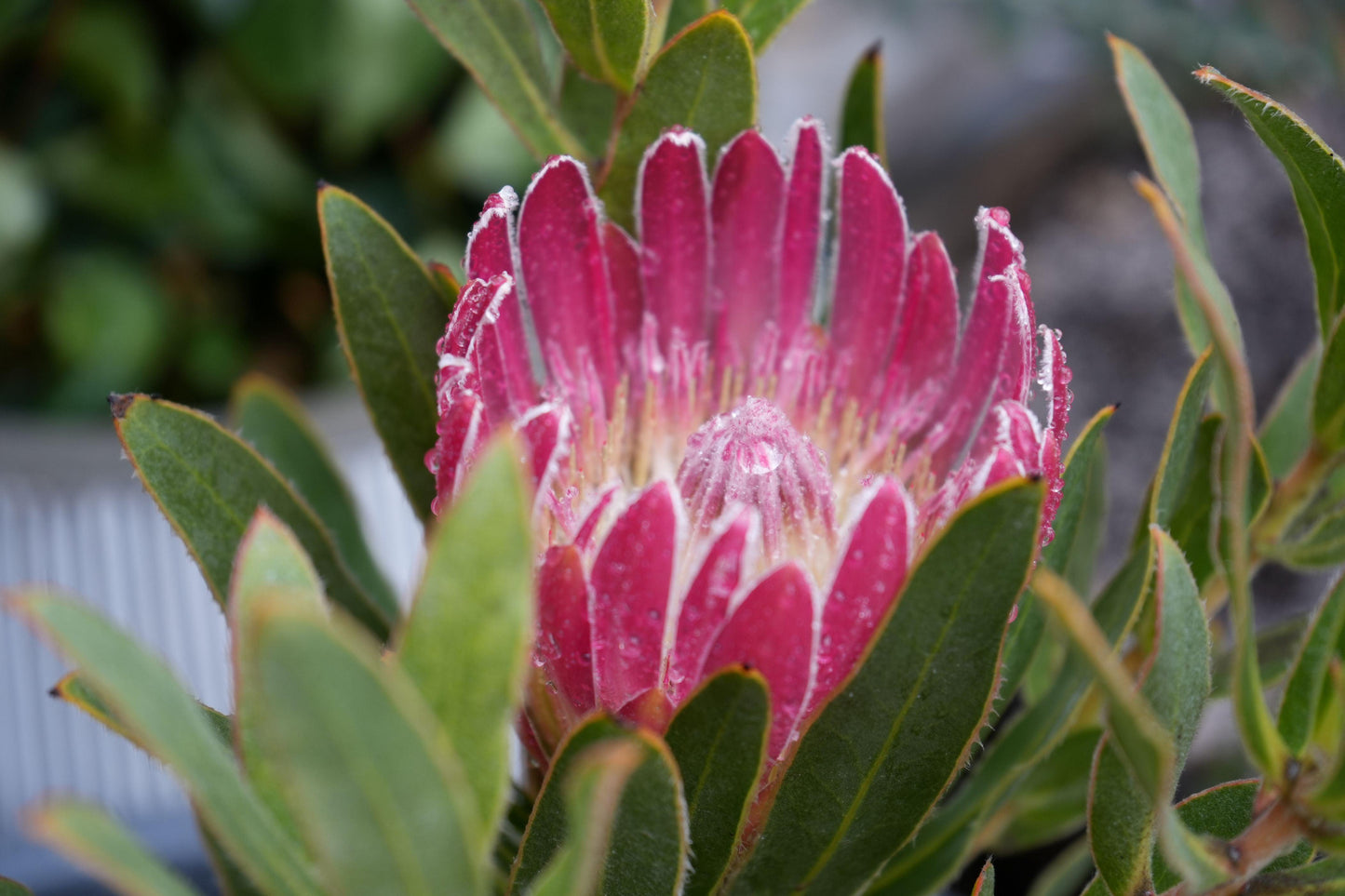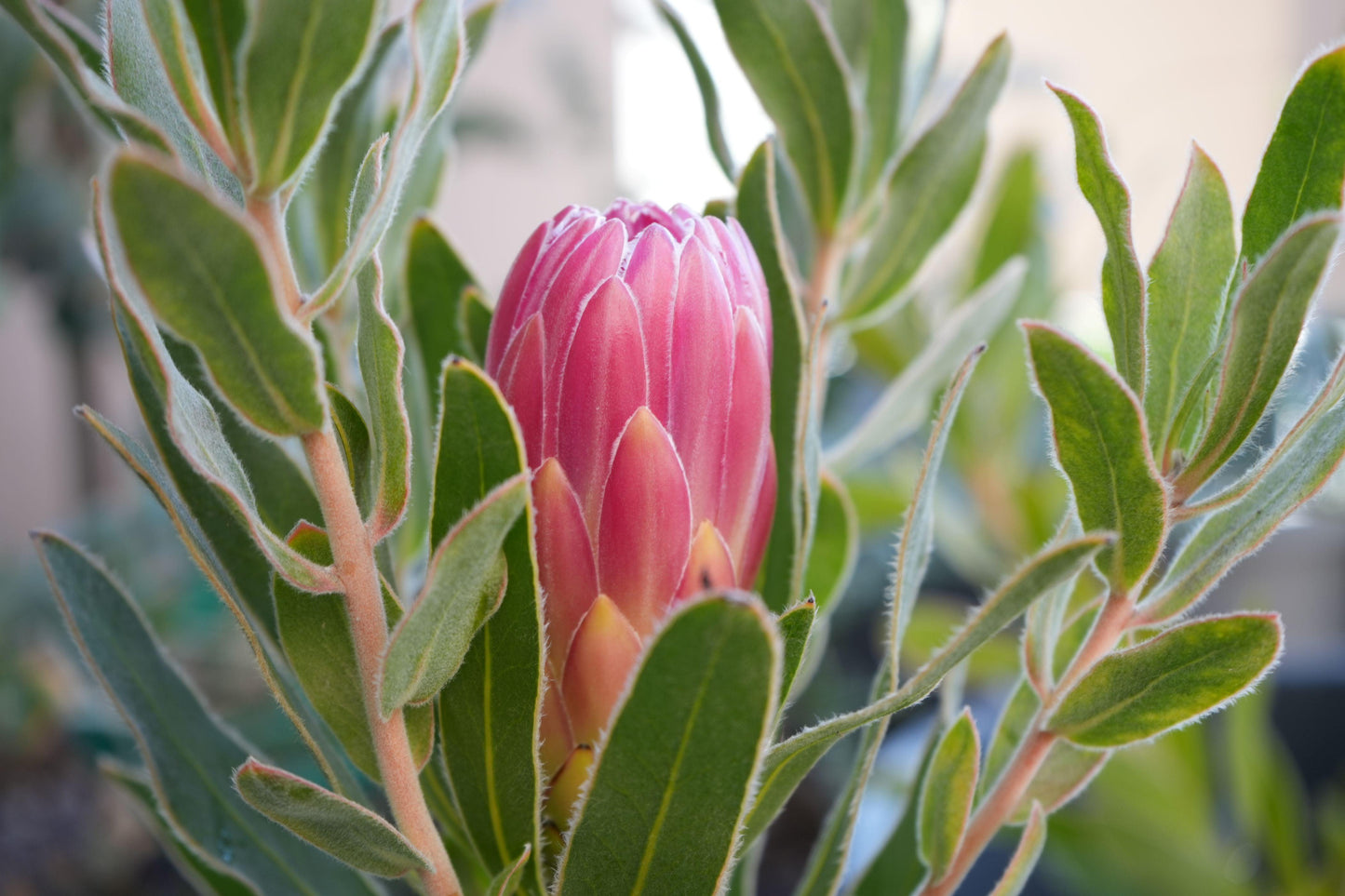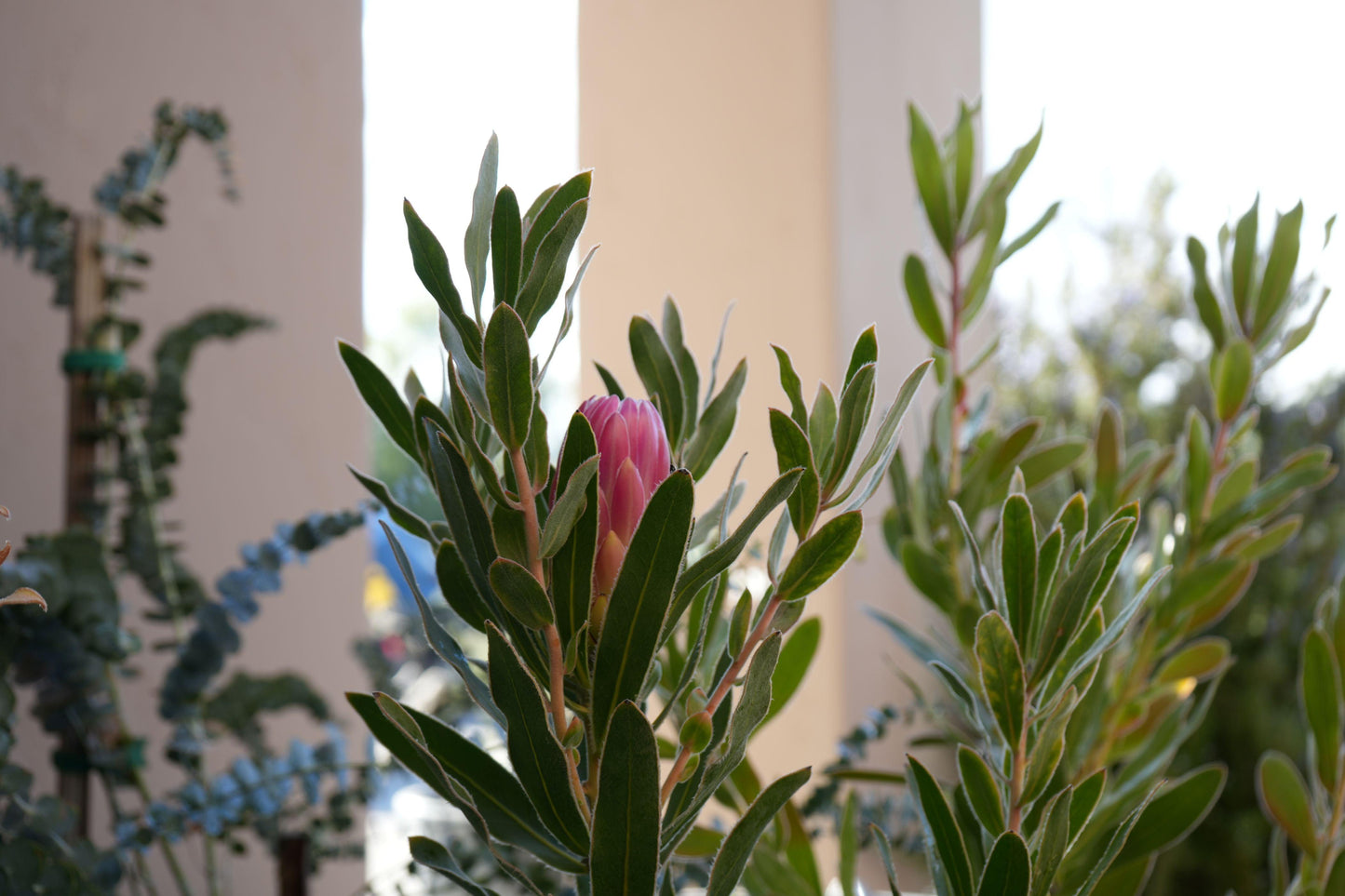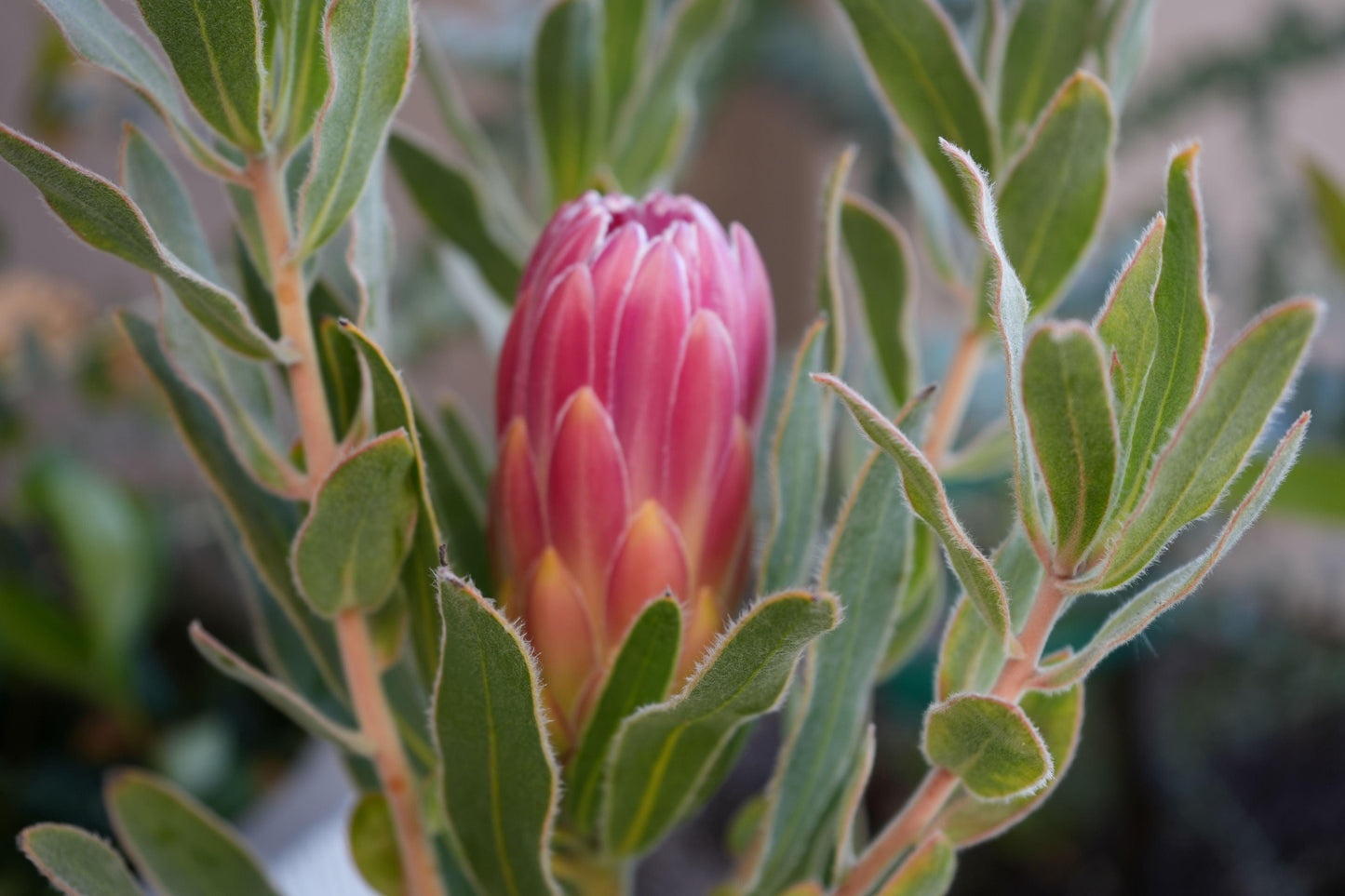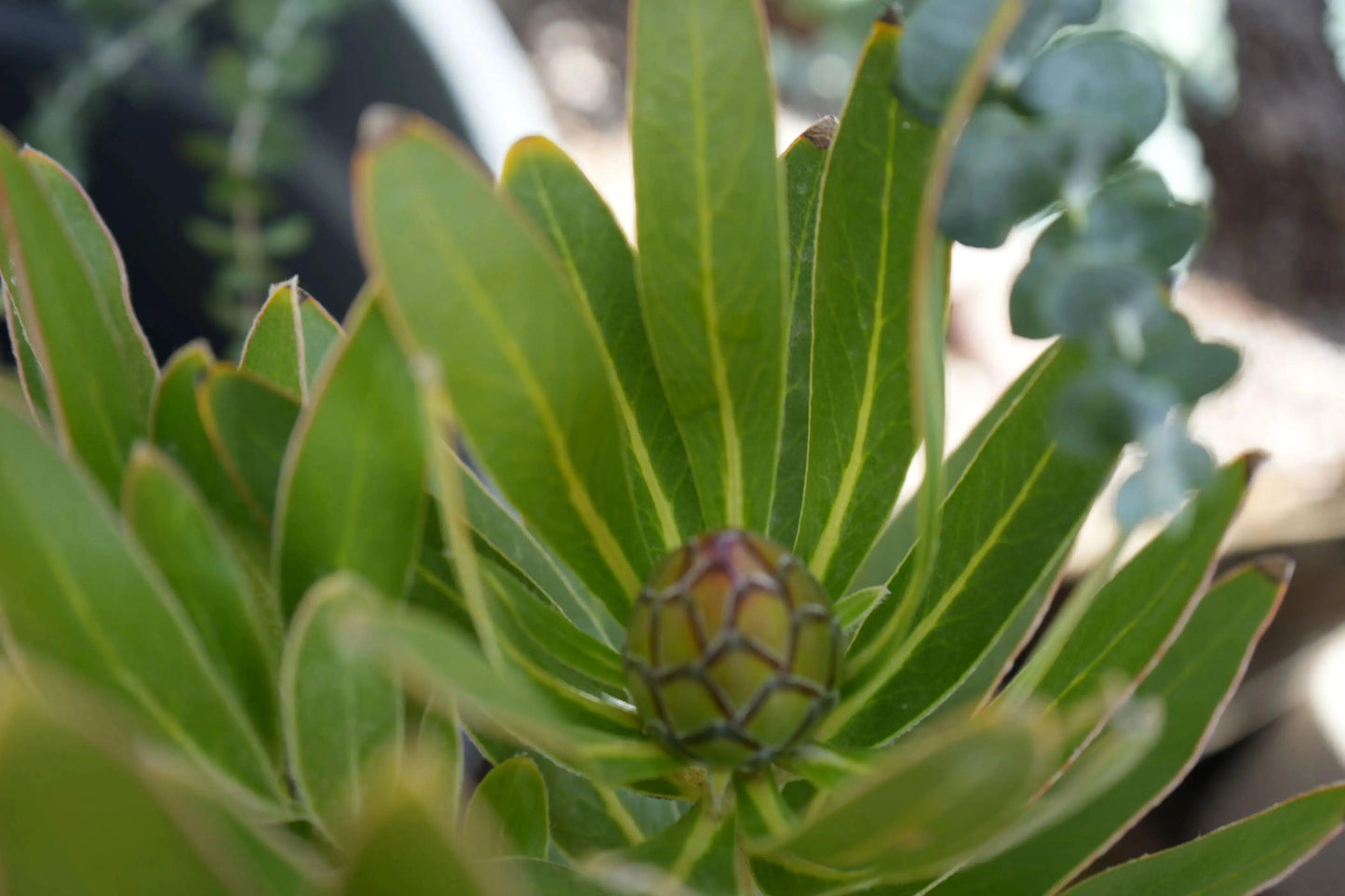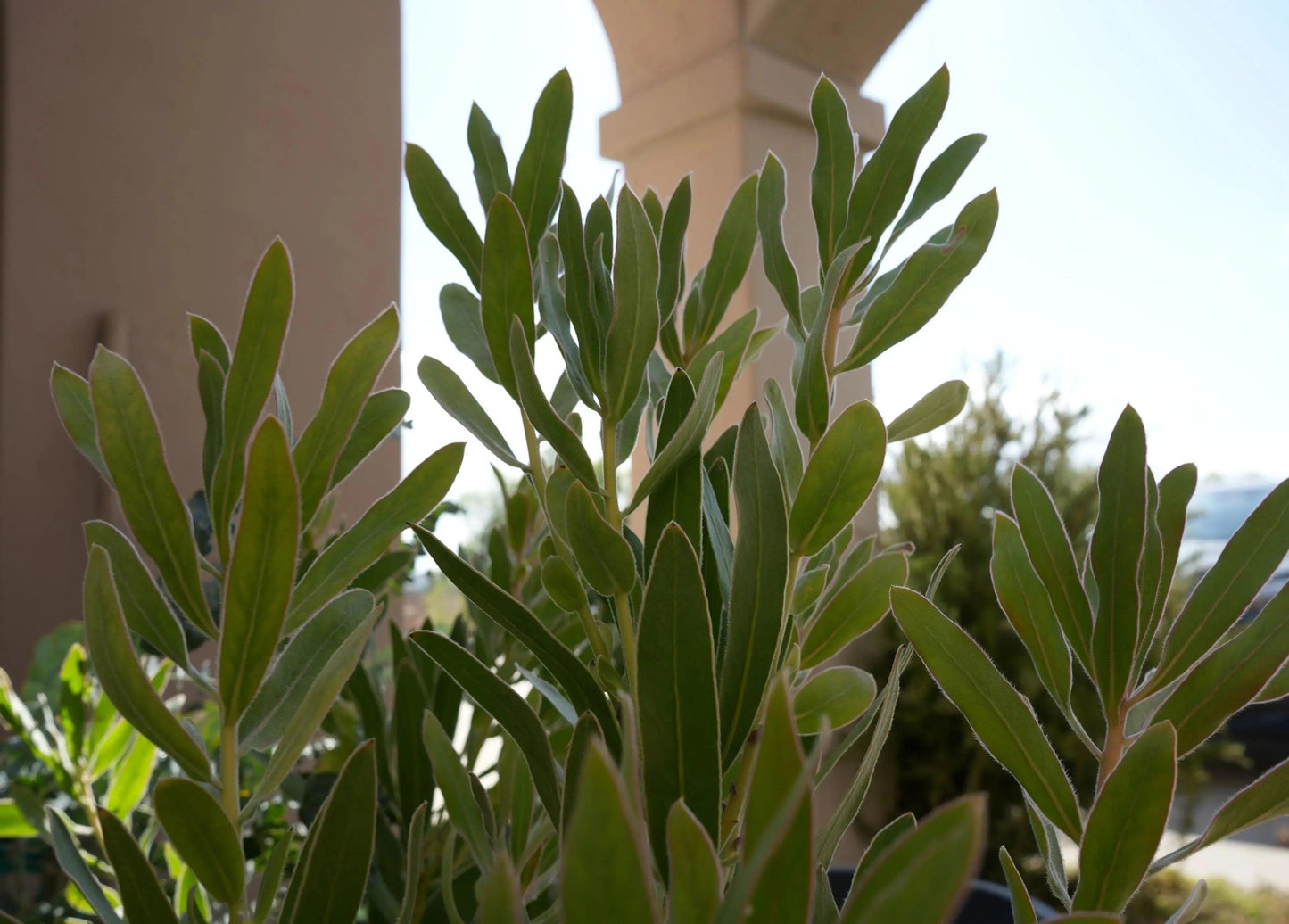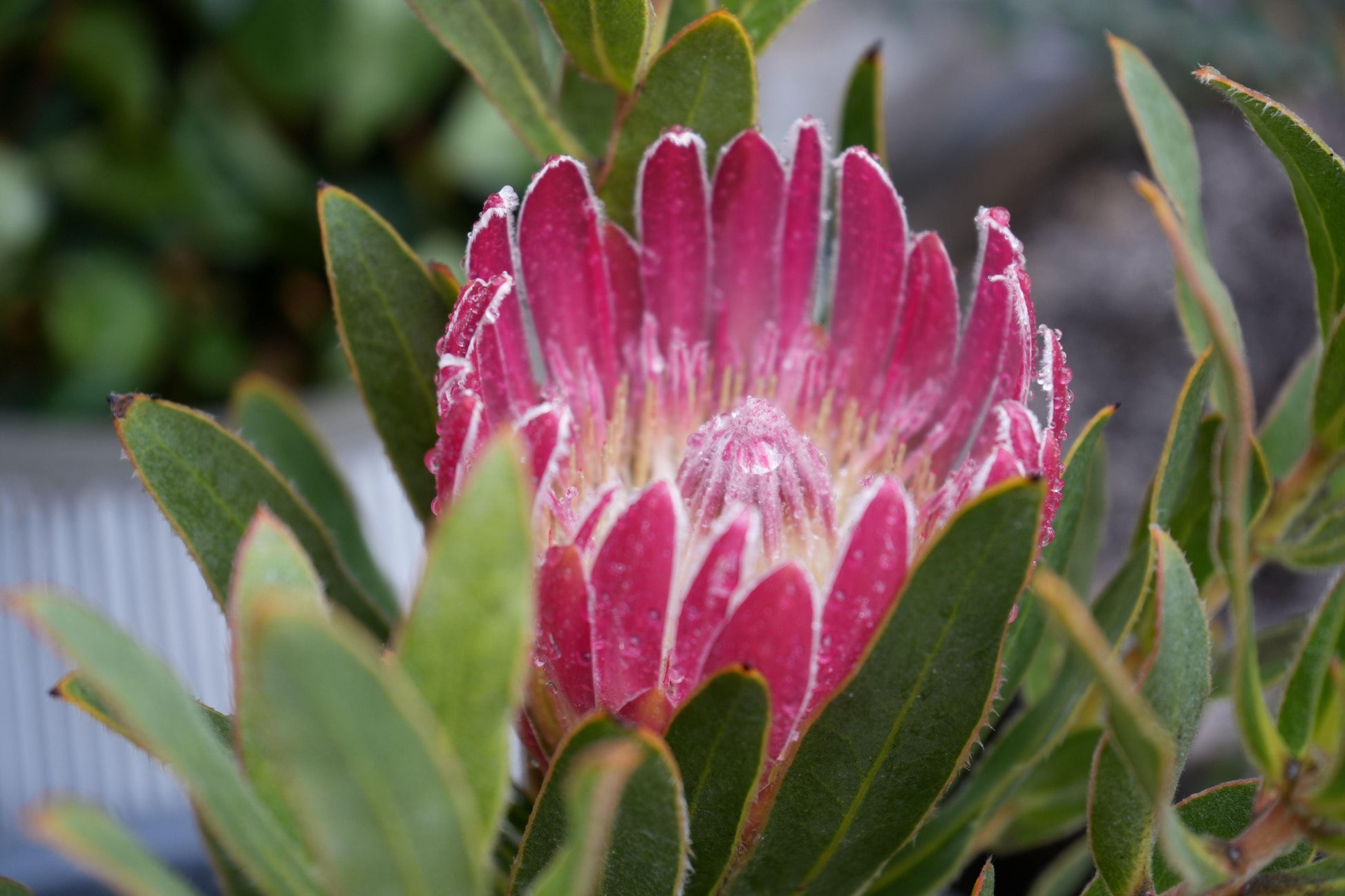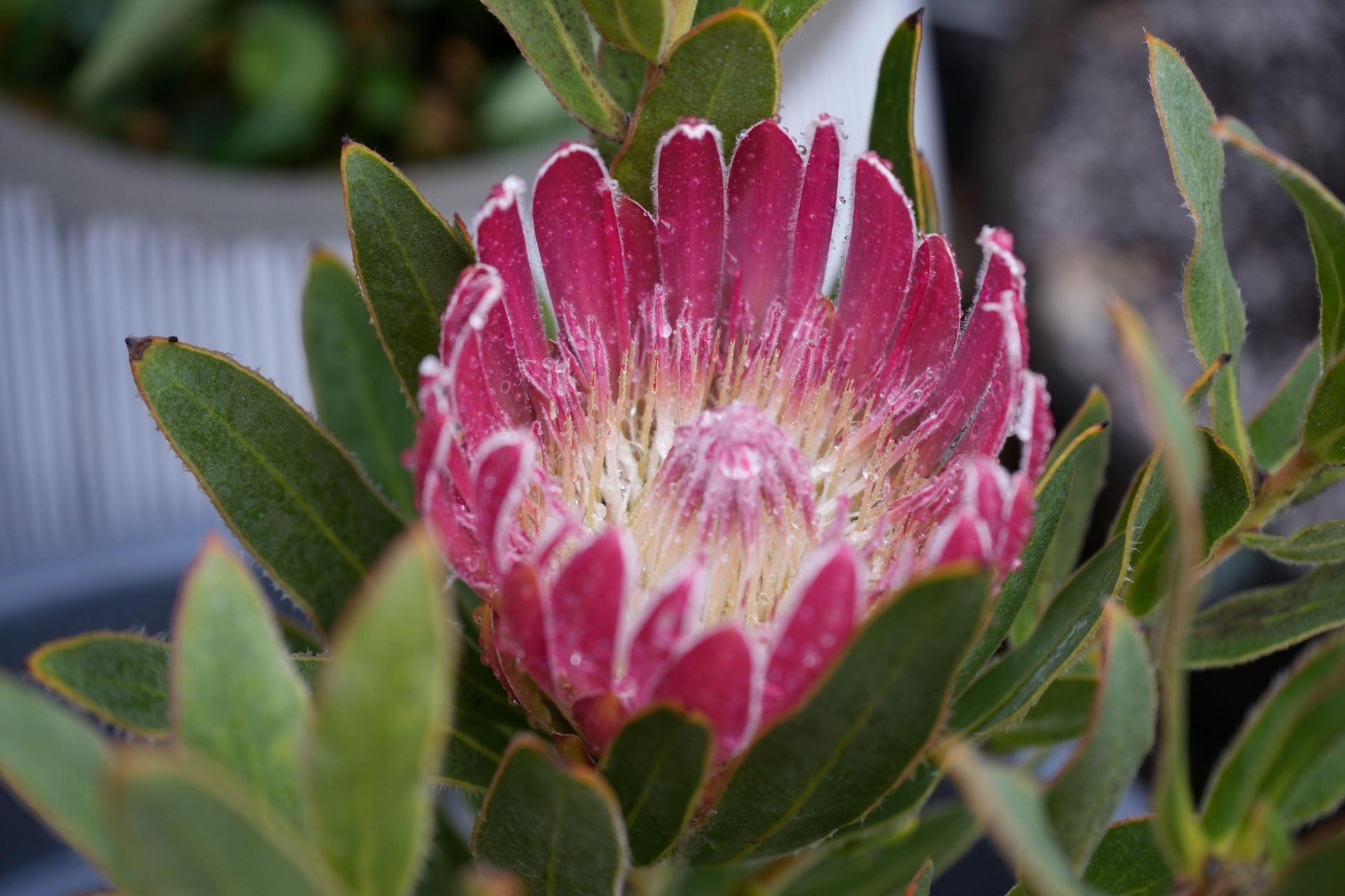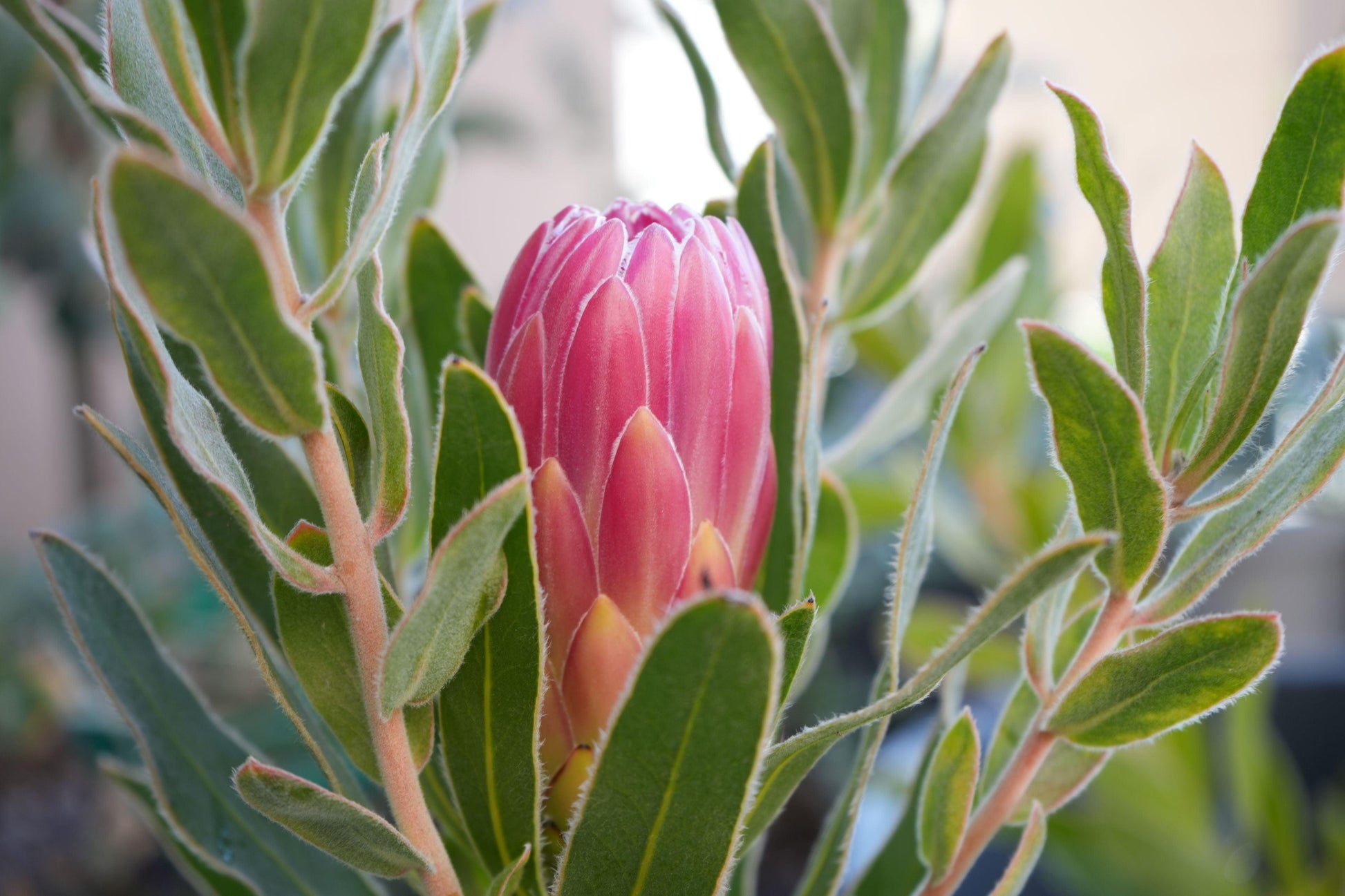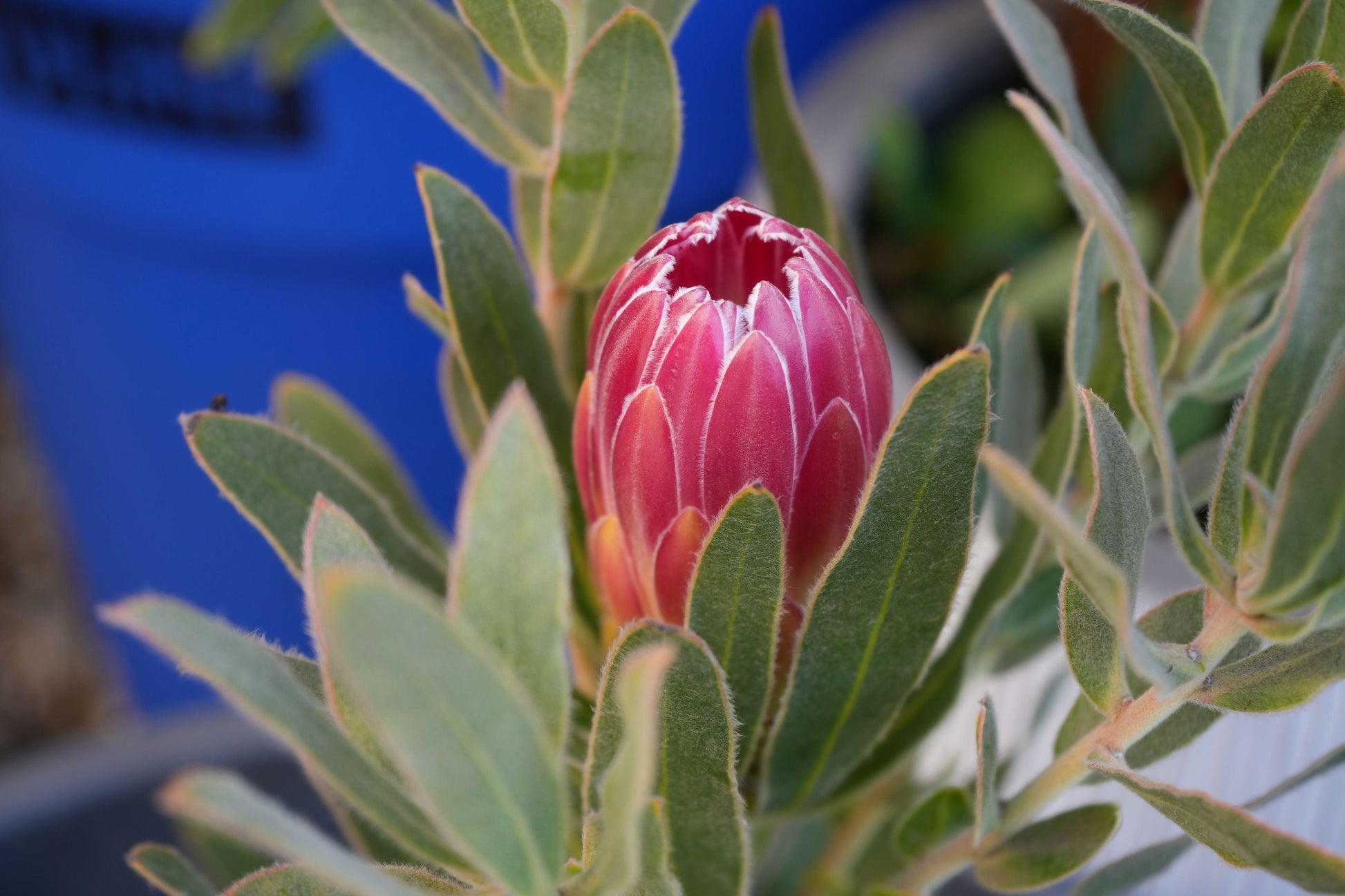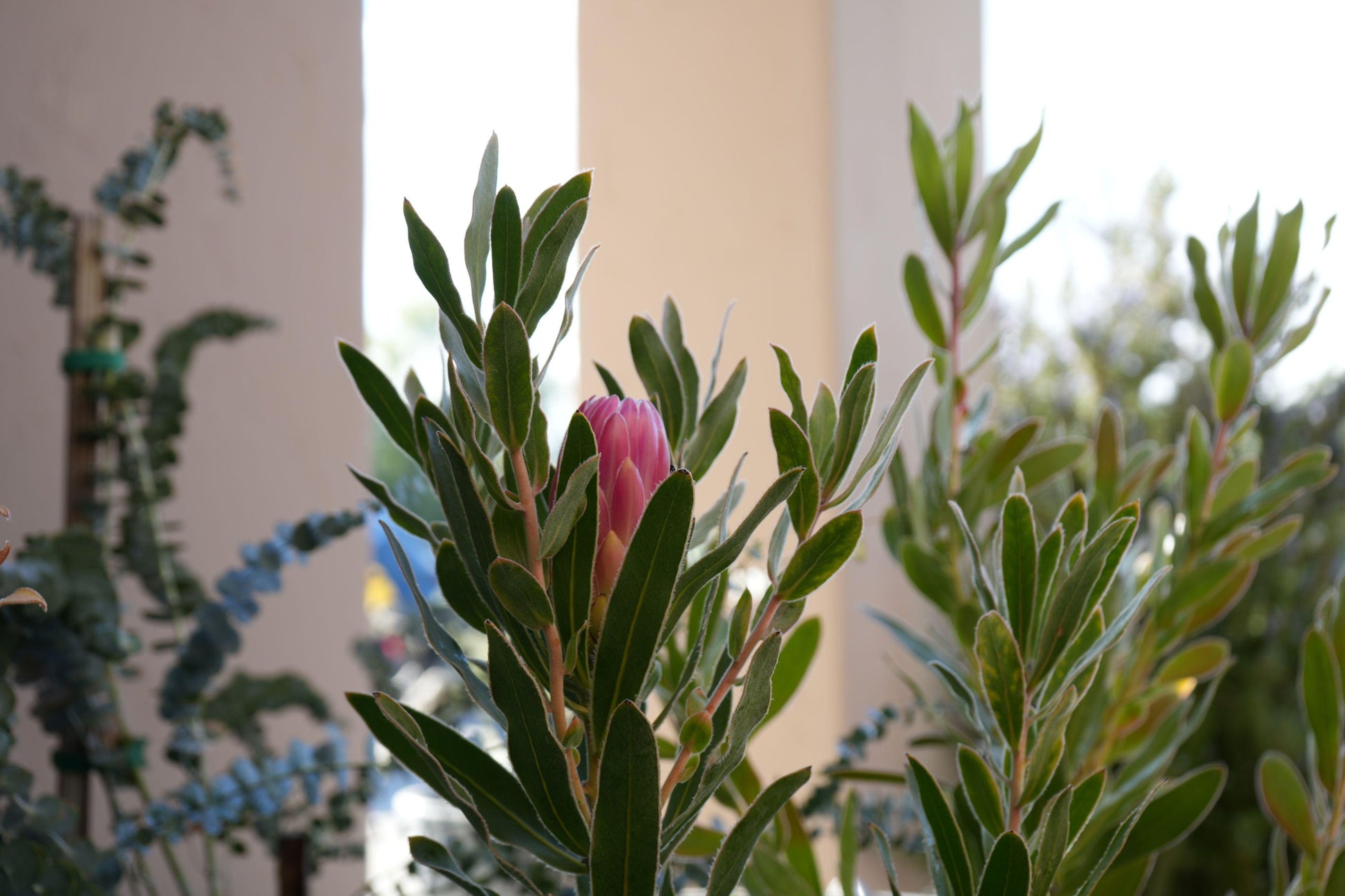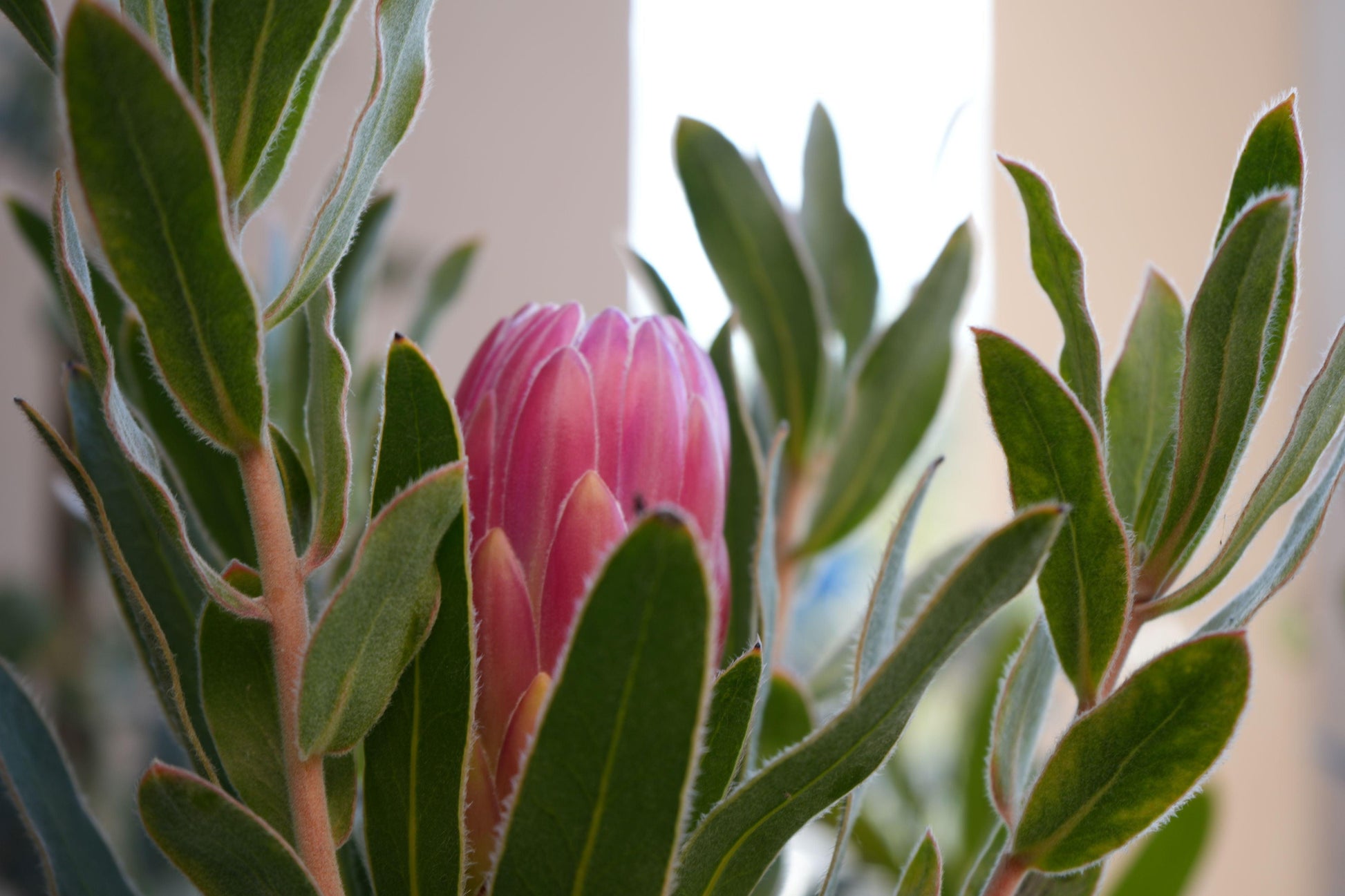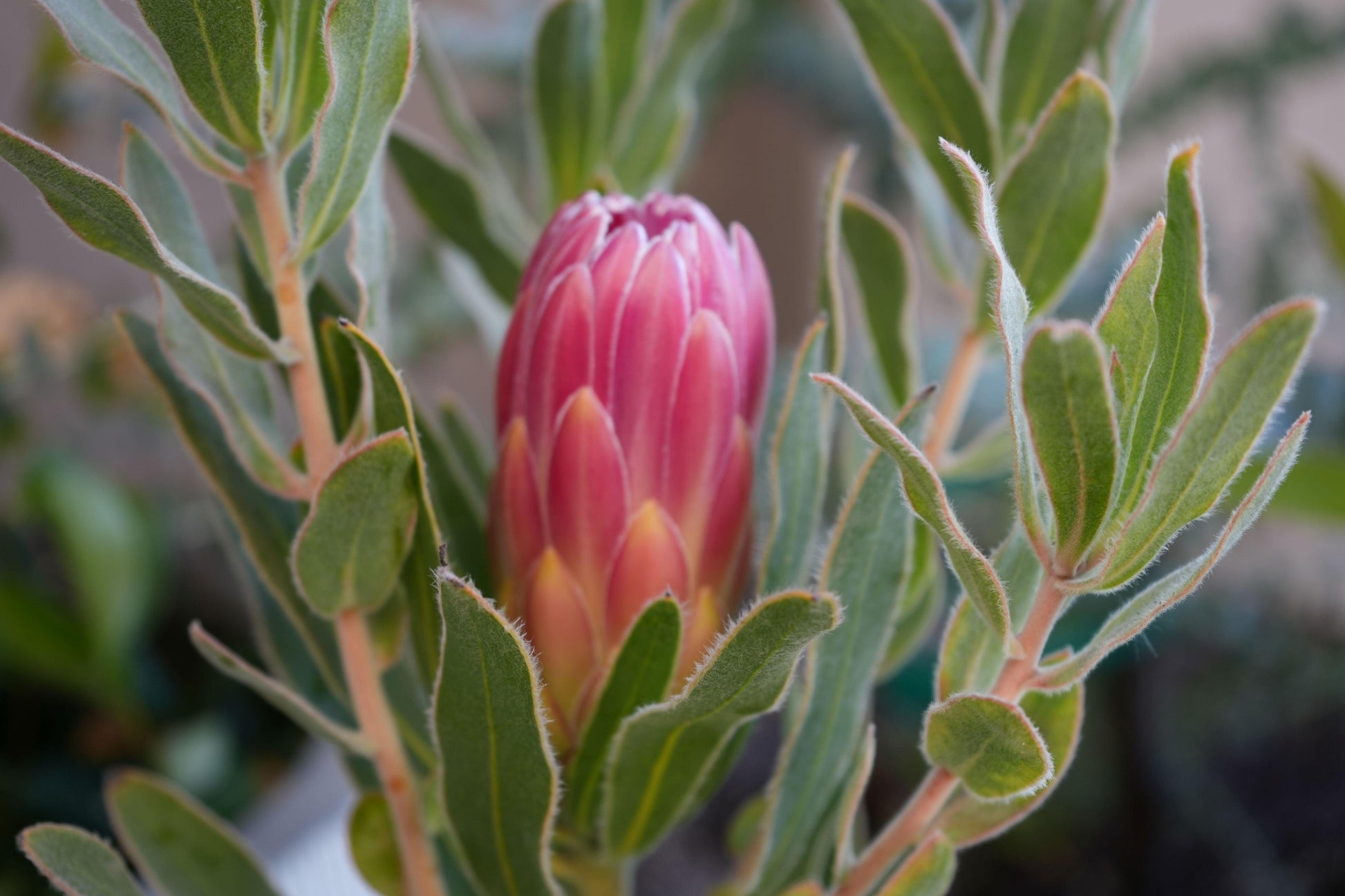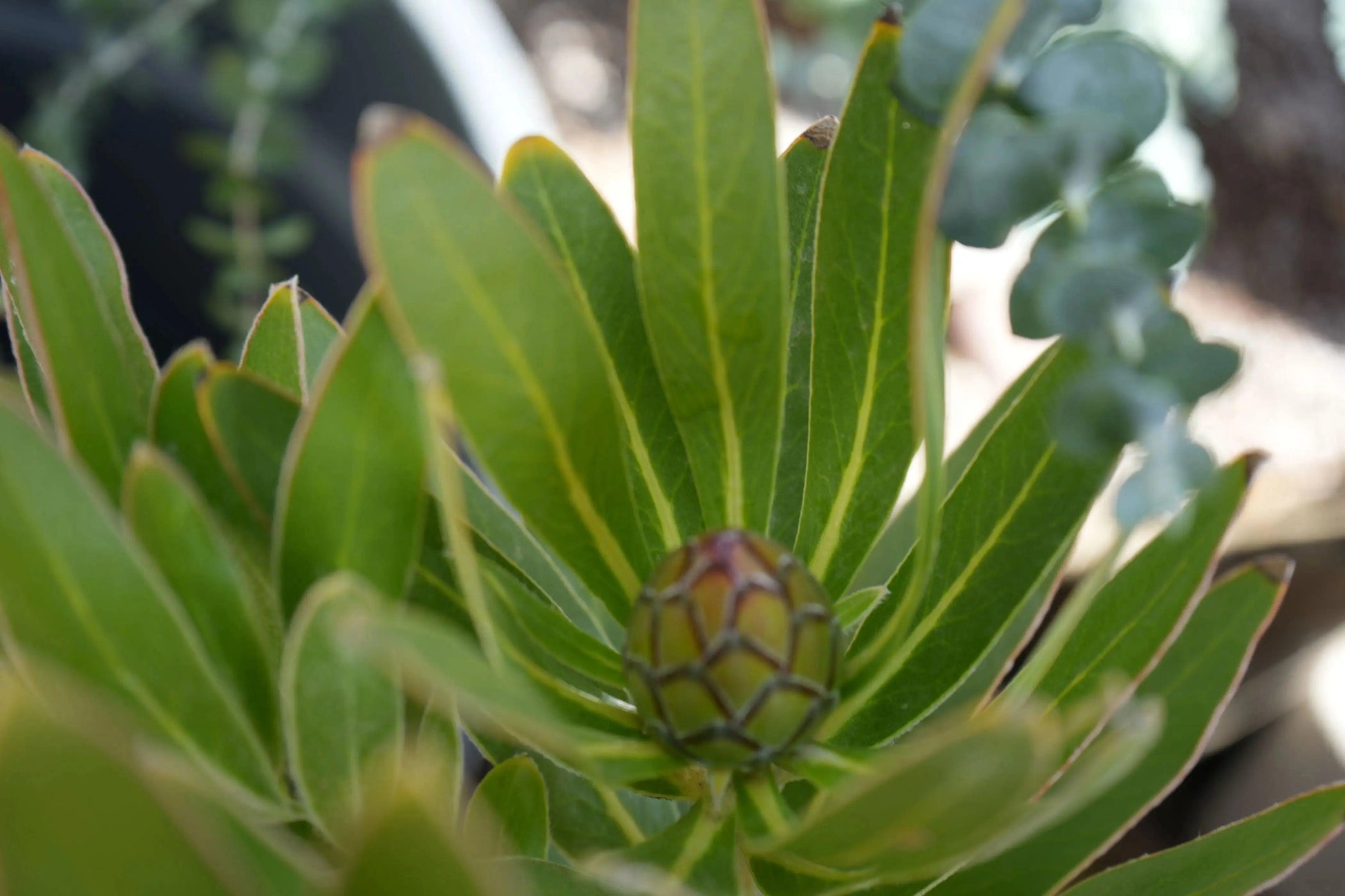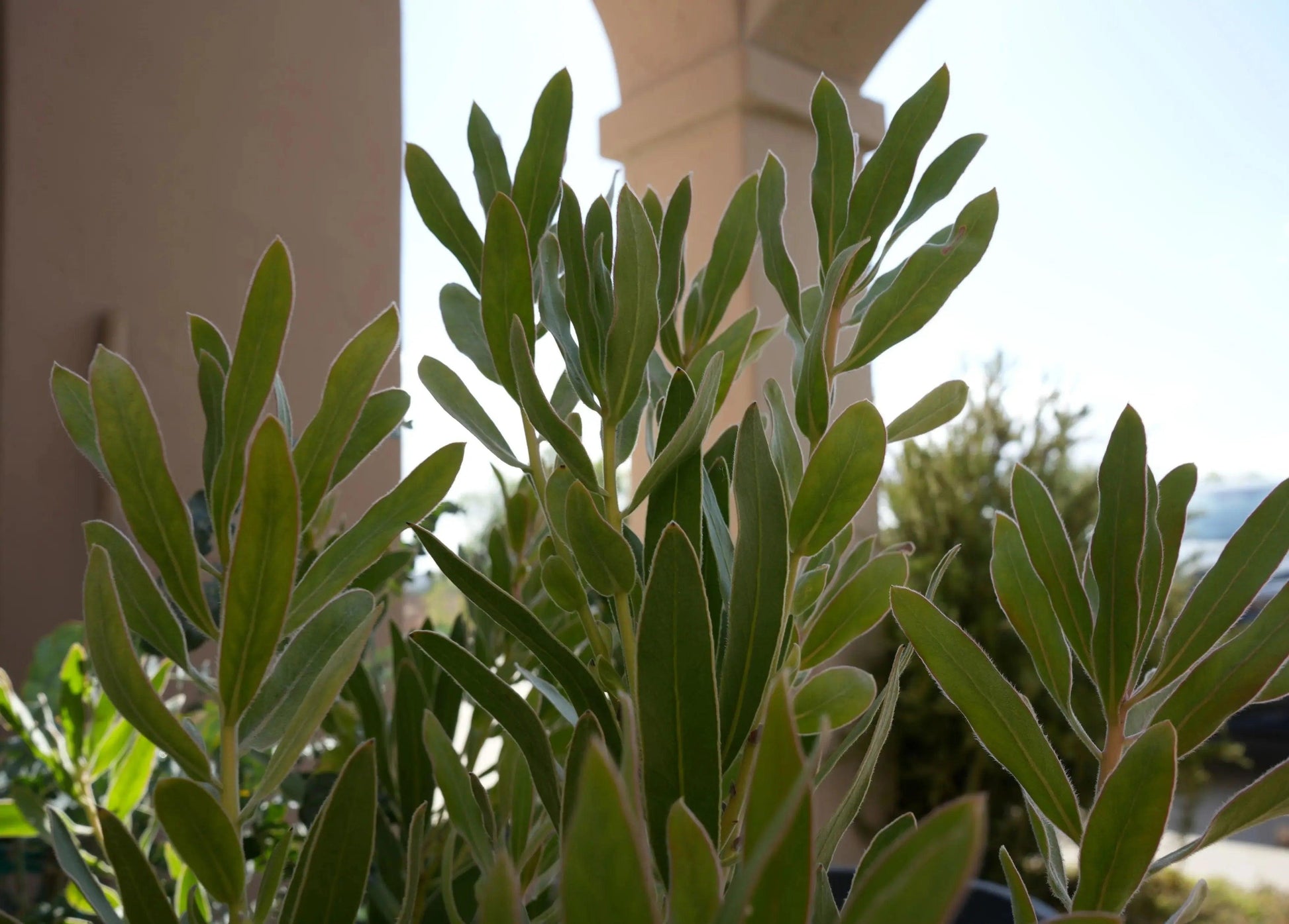Bonte Farm
Protea 'Brenda': A Vibrant Splash of Color, Deep Red Creamy White Beauty
Protea 'Brenda': A Vibrant Splash of Color, Deep Red Creamy White Beauty
Couldn't load pickup availability
💖 Protea 'Brenda': The Compact, Early-Flowering Crimson Gem
The Protea 'Brenda' is a popular and striking Protea hybrid prized for its compact size, early blooming nature, and stunning, deep flower color. This evergreen shrub features beautiful, upright cup-shaped flower heads with vivid crimson-red bracts, often tipped with white or silver fuzz, creating a striking contrast against its broad, leathery leaves. As a highly ornamental and relatively small Protea, 'Brenda' is an excellent specimen plant for smaller yards, borders, or large patio containers in Mediterranean and water-wise gardens. Its reliability, drought tolerance, and ability to thrive in poor soils make it a rewarding, low-maintenance choice, delivering show-stopping blooms that are fantastic for cut flower arrangements.
Botanical Characteristics
|
Characteristic |
Detail |
|
Scientific Name |
Protea 'Brenda' (Hybrid Cultivar) |
|
Common Names |
Brenda Protea, Hybrid Protea. |
|
Growth Habit |
A dense, upright evergreen shrub with a tidy, compact habit that is easier to manage than larger Protea varieties. |
|
Foliage |
Features large, stiff, leathery, oval leaves that are deep green to gray-green, providing architectural texture. |
|
Flowers |
Medium to large, distinctive cup-shaped flower heads (bracts), typically 4–6 inches in diameter. The color is a vibrant, intense crimson-red with a glossy sheen. |
|
Flowering Season |
Known for its early and extended bloom period, often starting in late fall and continuing through spring, providing crucial cool-season color. |
|
Cut Flower Use |
Excellent long-lasting cut flower, highly valued for its intense color and manageable stem size. |
Mature Size
'Brenda' is an ideal size for modern gardens and containers.
- Height: Typically reaches a manageable 4–5 feet (1.2–1.5 meters) tall.
- Spread: Achieves a dense, comparable spread of 4–5 feet (1.2–1.5 meters) wide.
- Its compact size is a key feature for smaller landscape designs.
USDA Hardiness Zone
This Protea hybrid is best suited for USDA Hardiness Zones 9–11.1 It thrives in mild, nearly frost-free coastal and Mediterranean climates where it receives full sun and good airflow. Protection from sustained freezing temperatures is essential.
Cultivation and Care
|
Aspect |
Care Instructions |
|
Sunlight |
Requires full sun (a minimum of 6 hours of direct sun daily) and excellent air circulation to ensure strong growth and healthy blooms. |
|
Soil |
Essential: Demands perfectly well-drained, acidic soil (pH 5.0–6.0). Thrives in sandy or gritty, low-nutrient soils and must not sit in heavy, wet clay. |
|
Water |
Highly drought-tolerant once established. Water deeply during the first year. Mature plants require minimal summer water; overwatering is the primary threat. |
|
Fertilizer |
Crucial: ABSOLUTELY AVOID all phosphorus fertilizers. Proteas are extremely phosphorus sensitive. Use a specialized, low-phosphorus formula for Proteaceae, or none at all. |
|
Pruning |
Mandatory: The best way to prune is to harvest the flowering stems heavily, cutting back into the leafy part of the bush to promote fresh, bushy growth and a higher bloom count next season. |
Landscape Use
- Specimen Plant: Used as a vibrant focal point or architectural feature in the front of a border.
- Container Gardening: Its compact size makes it ideal for growing in large patio pots in areas with colder winters.
- Cut Flower Garden: Grown specifically for its professional-grade, intense crimson floral stems.
- Xeriscape Design: A cornerstone, low-water, low-fertility plant for arid and Mediterranean-style gardens.
Wildlife Attraction
The large flowers produce abundant, sweet nectar, making them highly attractive to nectar-feeding birds, which serve as natural pollinators. Planting 'Brenda' is an excellent way to attract hummingbirds and native birds to your cool-season garden.2
Pest and Disease Resistance
Protea 'Brenda' is generally a hardy and robust plant when provided with the correct drainage.3 The most common issues are root rot and collar rot, which are caused by poor soil drainage or overwatering. Fungal leaf spots can occur if humidity is very high, and air circulation is poor.
Propagation
To ensure the resulting plant maintains the specific, desirable traits and crimson flower color of the 'Brenda' cultivar, propagation must be conducted using vegetative methods. Semi-hardwood cuttings are the preferred and most reliable technique, generally taken during the warmer months. Propagation from seed is not used for maintaining cultivar identity.
Protea 'Brenda': A Vibrant Splash of Color, Deep Red Creamy White Beauty
Share
